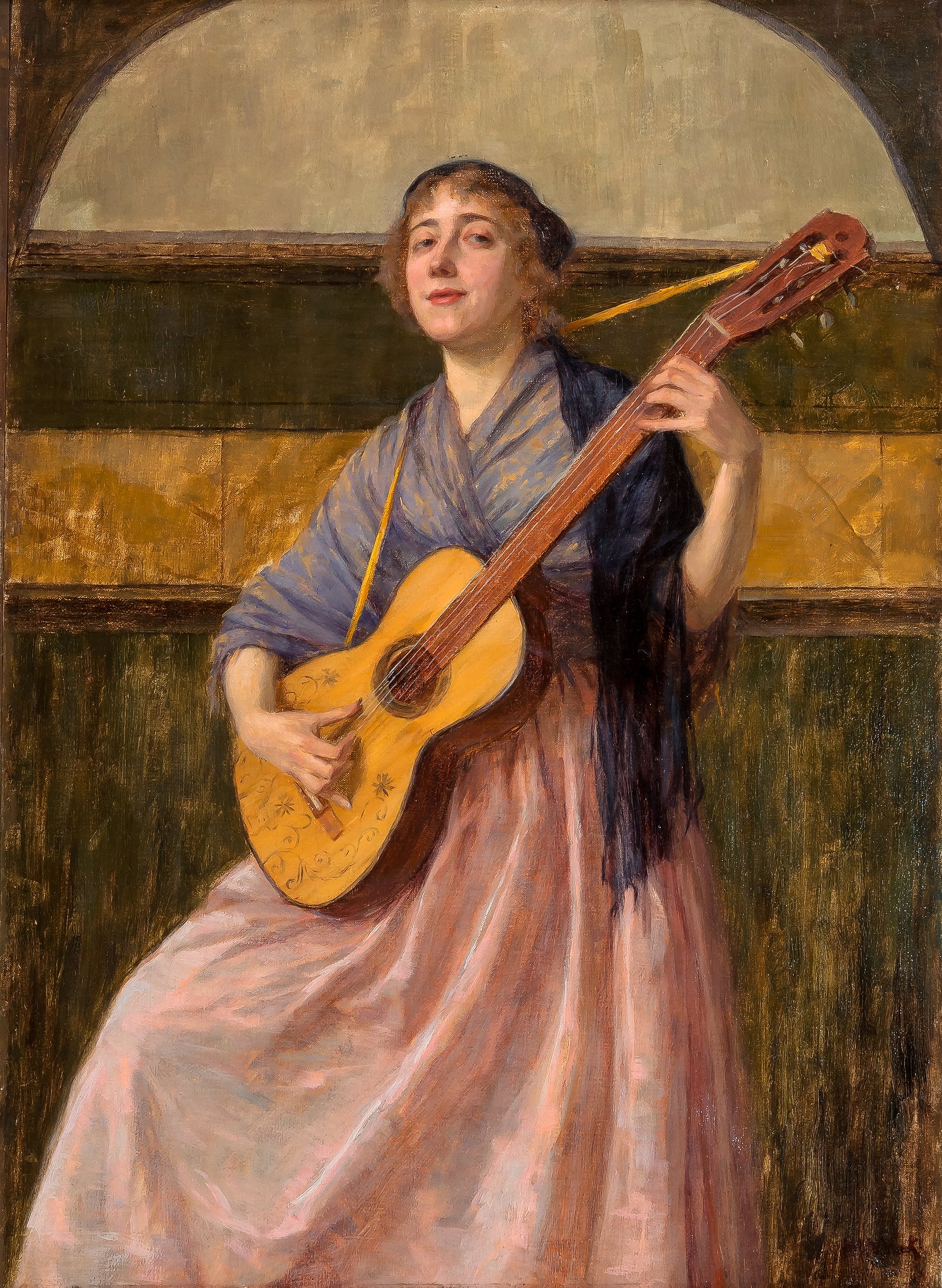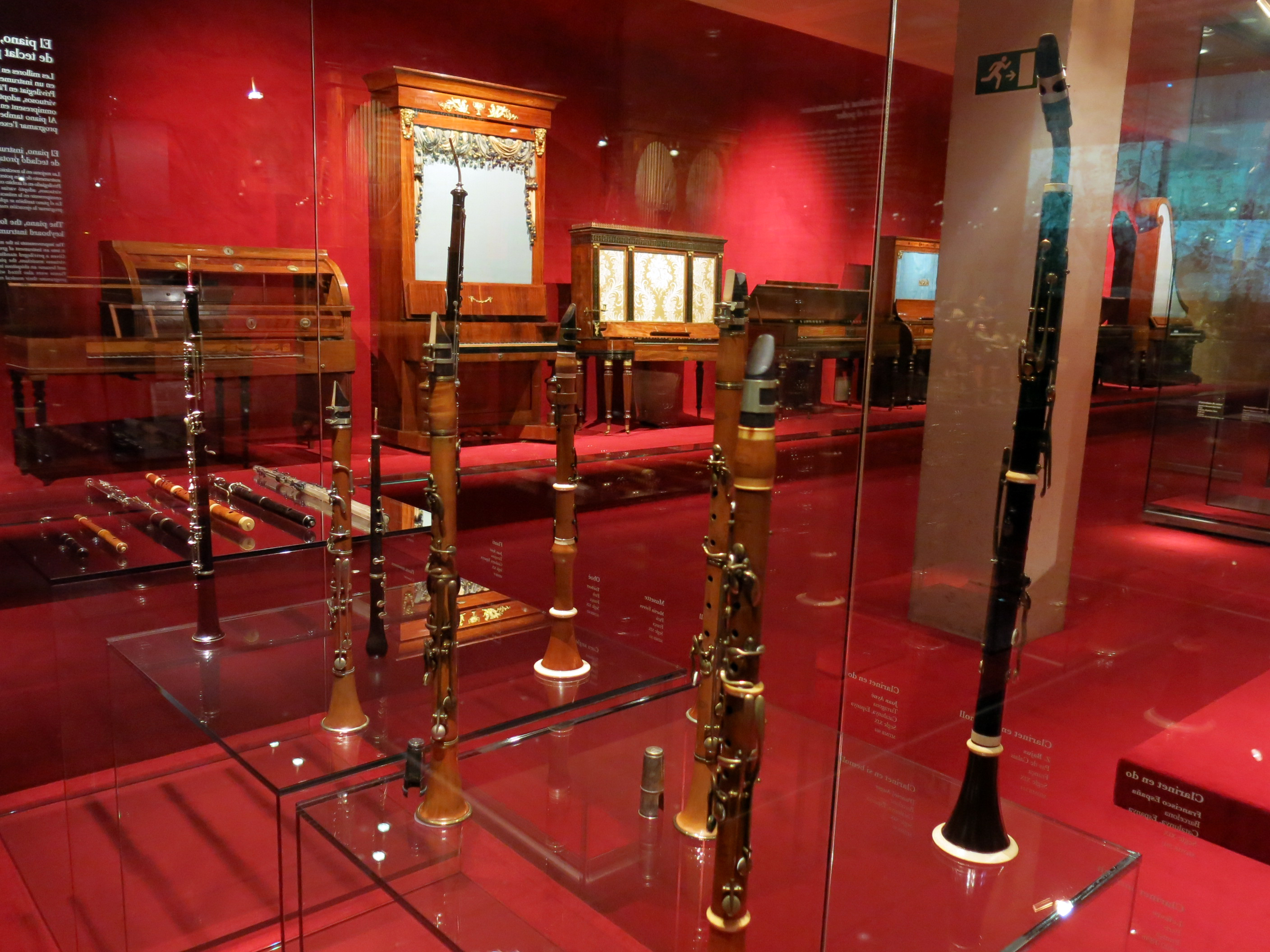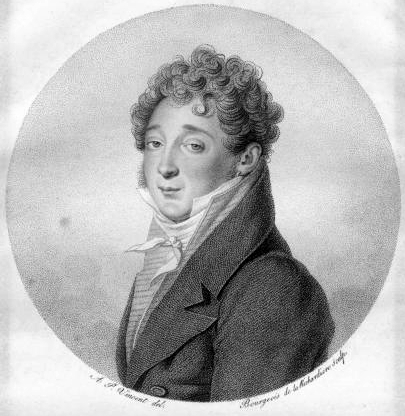|
Double-lip Embouchure
The double-lip embouchure is a type of embouchure used in playing woodwind instruments like oboe and bassoon, and occasionally clarinet and saxophone. It contrasts with the single-lip embouchure in that both lips cover the dental surfaces. Historically the double-lip embouchure was common among clarinettists, and was advocated in methods books, such as those by Jean-Xavier Lefèvre and Franz Frohlich. The shift in the 1820s to playing with the reed facing downwards corresponded with a move away from exclusive double-lip embouchure. Double-lip embouchure was similarly recommended in early saxophone materials, such as those of Adolphe Sax and Louis Mayeur. The double-lip embouchure supports more even lip muscle development, since both lips are involved in maintaining control of the mouthpiece/reed. Clarinettist Keith Stein suggests that double-lip playing on that instrument can be used as a remedial technique to address issues of "tone production, upper register tonguing, legato ... [...More Info...] [...Related Items...] OR: [Wikipedia] [Google] [Baidu] |
Embouchure
Embouchure () or lipping is the use of the lips, facial muscles, tongue, and teeth in playing a wind instrument. This includes shaping the lips to the mouthpiece of a woodwind instrument or the mouthpiece of a brass instrument. The word is of French origin and is related to the root ', 'mouth'. Proper embouchure allows instrumentalists to play their instrument at its full range with a full, clear tone and without strain or damage to their muscles. Brass embouchure While performing on a brass instrument, the sound is produced by the player buzzing their lips into a mouthpiece. Pitches are changed in part through altering the amount of muscular contraction in the lip formation. The performer's use of the air, tightening of cheek and jaw muscles, as well as tongue manipulation can affect how the embouchure works. Maintaining an effective embouchure is an essential skill for any brass instrumentalist, but its personal and particular characteristics mean that different pedagogues and ... [...More Info...] [...Related Items...] OR: [Wikipedia] [Google] [Baidu] |
Johnny Hodges
Cornelius "Johnny" Hodges (July 25, 1907 – May 11, 1970) was an American alto saxophonist, best known for solo work with Duke Ellington's big band. He played lead alto in the saxophone section for many years. Hodges was also featured on soprano saxophone, but refused to play soprano after 1946. Along with Benny Carter, Hodges is considered to be one of the definitive alto saxophone players of the big band era. After beginning his career as a teenager in Boston, Hodges began to travel to New York and played with Lloyd Scott, Sidney Bechet, Luckey Roberts and Chick Webb. When Ellington wanted to expand his band in 1928, Ellington's clarinet player Barney Bigard recommended Hodges. His playing became one of the identifying voices of the Ellington orchestra. From 1951 to 1955, Hodges left the Duke to lead his own band, but returned shortly before Ellington's triumphant return to prominence – the orchestra's performance at the 1956 Newport Jazz Festival. Biography Early lif ... [...More Info...] [...Related Items...] OR: [Wikipedia] [Google] [Baidu] |
Reginald Kell
Reginald Clifford Kell (8 June 19065 August 1981) was an English clarinettist. He was noted especially for his career as a soloist and chamber music player. He was the principal clarinettist in leading British orchestras, including the London Philharmonic, Philharmonia, and Royal Philharmonic, and was also active as a solo recording artist. Kell was influential as one of the first clarinettists to employ continuous vibrato to enhance the expressive quality of the instrument. He was also a noted teacher, serving two different appointments at his ''alma mater'', the Royal Academy of Music in London. In 1948 Kell moved to the United States where he pursued a solo career and taught, with pupils including the jazz clarinettist Benny Goodman. Career Early years Born in York, England, Kell was awarded a scholarship to the Royal Academy of Music in London in 1929, where he studied with Haydn Draper until 1932.Weston, Pamela"Kell, Reginald" ''Grove Music Online'', Oxford Music Online, ... [...More Info...] [...Related Items...] OR: [Wikipedia] [Google] [Baidu] |
Louis Cahuzac
Louis (Jean Baptiste) Cahuzac (12 July 1880 – 9 August 1960) was a French clarinetist and composer. Cahuzac was an outstanding performer and one of the few clarinetists who made a career as a soloist in the first part of the 20th century. Life and career Louis Cahuzac was born in Quarante, in Languedoc, in the south of France. His teachers were Felix Pagès in Toulouse conservatoire and Cyrille Rose in the Paris Conservatory. Cahuzac made the first recording of Carl Nielsen's Clarinet Concerto, a piece originally written for the Danish clarinetist Aage Oxenvad. On 22 November 1956, at the age of 76, he recorded the Clarinet Concerto in A major by Paul Hindemith for the EMI music label under the composer's baton. He was a great teacher also and many students became famous like Eduard Brunner (Munich's Bavarian Radio Symphony), Yona Ettlinger, Hans Rudolph Stalder, Gervase de Peyer, André Boutard (Paris Opera) or Gilbert Voisin (Geneva international prize winner in 1 ... [...More Info...] [...Related Items...] OR: [Wikipedia] [Google] [Baidu] |
Ralph McLane
Ralph McLane (December 19, 1907 – February 18, 1951) was an American clarinetist. He was born in Lynn, Massachusetts. McLane is best known for his tenure as principal clarinetist of the Philadelphia Orchestra from 1943 until his death in 1951. He is credited with giving the first public performance of the Clarinet Concerto by Aaron Copland at Carnegie Hall in New York City with the Philadelphia Orchestra and Eugene Ormandy on November 28, 1950. (Benny Goodman gave the premiere on radio with the NBC Symphony The National Broadcasting Company (NBC) is an American English-language commercial broadcast television and radio network. The flagship property of the NBC Entertainment division of NBCUniversal, a division of Comcast, its headquarters ar ... a few weeks earlier.) Discography * Brahms - Trio, Op. 114. With Sterling Hawkins & Milton Kaye. Musicraft 15. Re-released on the Grenadillamusic.com label and also contain Reminiscences of McLane by David Weber & Ignatius Gen ... [...More Info...] [...Related Items...] OR: [Wikipedia] [Google] [Baidu] |
Ballad
A ballad is a form of verse, often a narrative set to music. Ballads derive from the medieval French ''chanson balladée'' or '' ballade'', which were originally "dance songs". Ballads were particularly characteristic of the popular poetry and song of Britain and Ireland from the Late Middle Ages until the 19th century. They were widely used across Europe, and later in Australia, North Africa, North America and South America. Ballads are often 13 lines with an ABABBCBC form, consisting of couplets (two lines) of rhymed verse, each of 14 syllables. Another common form is ABAB or ABCB repeated, in alternating eight and six syllable lines. Many ballads were written and sold as single sheet broadsides. The form was often used by poets and composers from the 18th century onwards to produce lyrical ballads. In the later 19th century, the term took on the meaning of a slow form of popular love song and is often used for any love song, particularly the sentimental ballad of pop or ... [...More Info...] [...Related Items...] OR: [Wikipedia] [Google] [Baidu] |
Lee Konitz
Leon Konitz (October 13, 1927 – April 15, 2020) was an American composer and alto saxophonist. He performed successfully in a wide range of jazz styles, including bebop, cool jazz, and avant-garde jazz. Konitz's association with the cool jazz movement of the 1940s and 1950s includes participation in Miles Davis's ''Birth of the Cool'' sessions and his work with pianist Lennie Tristano. He was one of relatively few alto saxophonists of this era to retain a distinctive style, when Charlie Parker exerted a massive influence. Like other students of Tristano, Konitz improvised long, melodic lines with the rhythmic interest coming from odd accents, or odd note groupings suggestive of the imposition of one time signature over another. Other saxophonists were strongly influenced by Konitz, such as Paul Desmond and Art Pepper. He died during the COVID-19 pandemic from complications brought on by the disease. Biography Early life Konitz was born on October 13, 1927, in Chicago. He ... [...More Info...] [...Related Items...] OR: [Wikipedia] [Google] [Baidu] |
Warne Marsh
Warne Marion Marsh (October 26, 1927 – December 18, 1987) was an American tenor saxophonist. Born in Los Angeles, his playing first came to prominence in the 1950s as a protégé of pianist Lennie Tristano and earned attention in the 1970s as a member of Supersax. Biography Marsh came from an affluent artistic background: his father was Hollywood cinematographer Oliver T. Marsh (1892–1941), and his mother Elizabeth was a violinist. He was the nephew of actresses Mae Marsh and Marguerite Marsh and film editor Frances Marsh. He was tutored by Lennie Tristano. Marsh was often recorded in the company of other Cool School musicians, and remained one of the most faithful to the Tristano philosophy of improvisation – the faith in the purity of the long line, the avoidance of licks and emotional chain-pulling, the concentration on endlessly mining the same small body of jazz standards. While Marsh was a generally cool-toned player, the critic Scott Yanow notes that Marsh play ... [...More Info...] [...Related Items...] OR: [Wikipedia] [Google] [Baidu] |
Louis Mayeur , names sometimes translated to English as "Louis"
{{disambiguation ...
Louis may refer to: * Louis (coin) * Louis (given name), origin and several individuals with this name * Louis (surname) * Louis (singer), Serbian singer * HMS ''Louis'', two ships of the Royal Navy See also Derived or associated terms * Lewis (other) * Louie (other) * Luis (other) * Louise (other) * Louisville (other) * Louis Cruise Lines * Louis dressing, for salad * Louis Quinze, design style Associated names * * Chlodwig, the origin of the name Ludwig, which is translated to English as "Louis" * Ladislav and László - names sometimes erroneously associated with "Louis" * Ludovic, Ludwig, Ludwick, Ludwik Ludwik () is a Polish given name. Notable people with the name include: * Ludwik Czyżewski, Polish WWII general * Ludwik Fleck (1896–1961), Polish medical doctor and biologist * Ludwik Gintel (1899–1973), Polish-Israeli Olympic soccer play ... [...More Info...] [...Related Items...] OR: [Wikipedia] [Google] [Baidu] |
Woodwind Instrument
Woodwind instruments are a family of musical instruments within the greater category of wind instruments. Common examples include flute, clarinet, oboe, bassoon, and saxophone. There are two main types of woodwind instruments: flutes and reed instruments (otherwise called reed pipes). The main distinction between these instruments and other wind instruments is the way in which they produce sound. All woodwinds produce sound by splitting the air blown into them on a sharp edge, such as a reed or a fipple. Despite the name, a woodwind may be made of any material, not just wood. Common examples include brass, silver, cane, as well as other metals such as gold and platinum. The saxophone, for example, though made of brass, is considered a woodwind because it requires a reed to produce sound. Occasionally, woodwinds are made of earthen materials, especially ocarinas. Flutes Flutes produce sound by directing a focused stream of air below the edge of a hole in a cylindrical ... [...More Info...] [...Related Items...] OR: [Wikipedia] [Google] [Baidu] |
Adolphe Sax
Antoine-Joseph "Adolphe" Sax (; 6 November 1814 – 4 February 1894) was a Belgian inventor and musician who invented the saxophone in the early 1840s, patenting it in 1846. He also invented the saxotromba, saxhorn and saxtuba. He played the flute and clarinet. Early life Antoine-Joseph Sax was born on 6 November 1814 in Dinant, in what is now Belgium, to Charles-Joseph Sax and his wife Marie-Joseph (Masson). While his given name was Antoine-Joseph, he was referred to as Adolphe from childhood. His father and mother were instrument designers themselves, who made several changes to the design of the French horn. Adolphe began to make his own instruments at an early age, entering two of his flutes and a clarinet into a competition at the age of 15. He subsequently studied performance on those two instruments as well as voice at the Royal Conservatory of Brussels. Sax faced many brushes with death. As a child, he once fell from a height of three floors, hit his head on a sto ... [...More Info...] [...Related Items...] OR: [Wikipedia] [Google] [Baidu] |
Jean-Xavier Lefèvre
Jean-Xavier Lefèvre (Lausanne Cressis, 6 March 1763 – Paris Neuilly, 9 November 1829) was a Swiss-born French clarinettist and composer. In 1778, at the age of 15, Lefèvre became a member of the French Guards band. When the National Guard was formed in the year of the Revolution he played in this and from 1790 was its deputy conductor. In 1814 he was made a Chevalier of the Legion of Honor. He had many famous pupils at the Paris Conservatoire who included Janssen 1795/6, Péchignier 1797, Crusell 1803, Buteux 1814 to 1819, Crépin 1816 to 1821, Adolphe Hugot 1817 to 1822 and Pierre Hugot 1820 to 1824. He may also have taught Dacosta in 1797 and 1798, but some authorities say Duvernoy did. Very many of Lefèvre's pupils gained First Prizes. Up to the year 1817 a First Prize carried with it the award of a pair of French-made clarinets in B flat and C. From 1818 to 1892 the Prize was of music worth 100 francs. During Lefèvre's term of office the contest piece had always to be ... [...More Info...] [...Related Items...] OR: [Wikipedia] [Google] [Baidu] |





